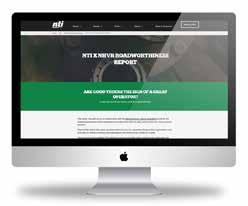THE TRANSPORT AND MACHINERY MAGAZINE OF WESTERN AUSTRALIA
WA
ISSN 2202-6193
100007516 May 2021 | price $6.95
TRANSPORT magazine
IN THIS ISSUE: Carav-anger season again Cyclists – Are they gambling with their lives Loading control methods WA Skills shortage
Page 2
REEF GROUP BRING NATIONAL TRANSPORT AWARD HOME TO WESTERN AUSTRALIA WA transport and logistics business REEF Group has recently been awarded the ‘Australian Champion Transport and Logistics Small Business 2020 Award’. REEF Group owner, Robert O’Keefe said, “Returning home with this national Award demonstrates how Western Australian businesses are leading the nation.” WATM • May 2021














